If you’ve searched online asking “What is a VPS provider?”, you’re essentially looking for an explanation of companies that offer Virtual Private Server hosting. A VPS provider is a hosting company that gives customers virtualized servers; think of renting an apartment (your VPS) in a large building (a physical server). Even though you share the building with other tenants, your apartment has its own dedicated resources, locks, and utilities.
In this article, we will be looking at the workings of a VPS, its key features, its various types, how to choose the right VPS provider, and a list of the best VPS providers.
How VPS Hosting Works
Under the hood, VPS hosting uses a hypervisor (like KVM, Xen, or Hyper-V) to run multiple virtual machines (VMs) on one physical host. Each VM has a fixed allocation of CPU cores, memory, and storage; those are your dedicated resources.
When you rent a VPS from a provider, you’re essentially buying a VM with an operating system image already installed (or the option to install one). The provider’s infrastructure guarantees your VPS is isolated: it cannot see or interfere with other tenants’ VMs.
You can reboot, install custom software, and configure the server just like a physical server. However, you don’t have physical access; the hosting company takes care of maintaining the data center, power, and network. Modern VPS platforms also include virtualization features like snapshots and easy scaling.
Key Features of VPS Hosting
The key features of VPS hosting that you’ll want in a good provider include:
- Dedicated Compute, Memory, and Storage:
- Entry-level plans often start at 1 vCPU, 1 GB RAM, and 20 GB SSD storage.
- Higher-end offerings can go up to 16 vCPU, 64 GB RAM, and 1 TB NVMe SSD storage.
- Resource Isolation
- Hypervisor-based separation ensures your CPU cycles, memory, and disk I/O are reserved for your instance and not affected by other tenants.
- Full Root or Administrator Access
- Unrestricted control over the operating system, installed software, and kernel parameters.
- Option to choose Linux distributions or Windows Server editions.
- High-Speed SSD or NVMe Storage
- Drives with IOPS in the range of 3,000 to 50,000 deliver much faster read/write performance than spinning disks.
- NVMe variants can offer a throughput of up to several gigabytes per second.
- Bandwidth Quotas and Network Throughput
- Monthly data transfer allowances typically run from 1 TB up to 10 TB.
- Network port speeds range from 1 Gbps on lower tiers to 10 Gbps on enterprise tiers.
- Automated Snapshots and Backups
- Point-in-time snapshots let you capture a full image of your server for quick rollbacks.
- Scheduled backup services often retain daily or weekly backups for 7 to 30 days.
- A survey found that 54 percent of computer users have suffered data loss, yet only 10 percent back up daily. That gap shows why having built-in, scheduled snapshots can literally save your server and your sanity.
- Service-Level Agreements for Uptime
- Industry-standard guarantees fall between 99.9 percent and 99.99 percent uptime.
- Redundant power supplies, network paths, and automatic failover mechanisms underpin these SLAs.
- On-the-Fly Scalability
- Increase CPU, RAM, or storage allocations with minimal downtime.
- Many platforms allow the hot-add of resources or require only a reboot.
- Control Panels and APIs
- Web-based dashboards (cPanel, Plesk, or custom) for point-and-click management.
- RESTful APIs and CLI tools enable full automation of deployments, monitoring, and scaling.
- Advanced Networking and Security
- Private VLANs and software firewalls for traffic segmentation
- Built-in DDoS protection, IPv6 support, and optional VPN or load-balancer integrations
According to a report, the global market for Virtual Private Servers, valued at US$7.1 billion in 2023, is projected to reach US$19.0 billion by 2030, and it’s easy to see why: dedicated resources, fast storage, and instant scaling make VPS hosting both powerful and flexible.
Common Challenges with VPS Hosting
Even VPS hosting has challenges. The most common issues include:
- Complexity: Managing a VPS requires some technical skill. If you go unmanaged, you must handle OS updates, security patches, and troubleshoot issues yourself. (That’s why some users prefer managed VPS plans.)
- Cost vs. Shared: A VPS costs more than shared hosting. For very simple sites, a VPS may be overkill. However, the extra cost buys significantly better performance and control.
- Resource Limits: While dedicated to you, a VPS still runs on shared hardware. In rare cases, if the host oversubscribes its servers, your VPS could face performance throttling. A reputable provider mitigates this by not packing too many VPSs on one server.
- Security Responsibility: The VPS provider secures the infrastructure, but you’re responsible for securing your OS and apps. Misconfiguring firewalls or leaving software unpatched can make your VPS vulnerable. Always follow best practices (using secure passwords, SSH keys, etc.).
- Single Points of Failure: A VPS can be a single point of failure if you don’t design for redundancy. If the physical host goes down and you lack backups, your VPS is offline. (Some users solve this by using multiple VPS instances or cloud services.)
- Performance Issues: Sometimes, a VPS may feel slow, perhaps due to network latency or resource contention. Often, the solution is choosing a server location closer to your users or upgrading the VPS size.
- Root Access Mistakes: Having root powers means you can accidentally break things if you’re not careful. An errant command might crash services. This is mitigated by experience, snapshots, and good documentation.
By being aware of these challenges and working with a good VPS provider, they can largely be managed. For instance, choosing a provider that offers managed support or an easy control panel can simplify server upkeep.
Use Cases for VPS Hosting
VPS hosting is versatile. Here are common use cases for VPS hosting:
- Growing Websites & Blogs: If you outgrow shared hosting (e.g., you run a WordPress site with medium traffic), a VPS can handle more visitors reliably. Look for specialized solutions like a WordPress VPS.
- Business Applications: Small businesses might run e-commerce platforms, ERP, or CRM systems on a VPS. The isolation and resources make sure that business-critical apps run smoothly.
- Game Servers: Gamers often rent VPSs for private game servers (Minecraft, Counter-Strike, etc.) because they need dedicated CPU/RAM and full admin control.
- Development & Testing: Developers use VPS instances as staging or test servers. You can spin up a VPS, install development tools, test your app, and then destroy it without impacting production.
- VPN and Proxy Servers: A VPS makes a great VPN (Virtual Private Network) endpoint. In fact, we have a guide on VPS for VPN using a VPS for a VPN server boosts privacy and speed, since you get guaranteed bandwidth.
- Containers and Virtual Desktops: With full admin rights, users can install Docker on a VPS (see our install Docker on VPS post) or even run remote desktop solutions (RDP/VNC).
- Learning and Experimentation: Hobbyists and students use cheap VPS plans to learn Linux or networking.
Types of VPS Hosting
There are a few ways to categorize VPS offerings:
- Managed vs. Unmanaged: An unmanaged VPS means the provider just gives you the server; you’re responsible for updates, security, and management. A managed VPS plan includes support for system administration (the host might apply patches, handle backups, etc.). Managed plans are pricier but save time if you lack Linux skills.
- Linux vs. Windows VPS: Most VPS providers offer both. Linux VPS (using distributions like Ubuntu, CentOS, Debian, etc.) is typically cheaper and great for web servers, databases, and scripting. Windows VPS runs Windows Server and is needed if you require Windows-specific software (IIS, .NET apps).
- Container-based vs. Hypervisor-based: Some hosts utilize OS-level virtualization (such as OpenVZ/LXC), which is efficient but requires all VPSs to share the same kernel. Others use full hypervisors (KVM, VMware), giving each VPS its own kernel. KVM is more flexible; you can reboot into different kernel versions if needed.
- Specialized VPS: Some vendors offer VPS plans optimized for particular uses (e.g., high-CPU, high-memory, or GPU VPS). There are also VPS plans on demand (hourly billing) vs. fixed plans.
In practice, most people just compare managed vs unmanaged and Linux vs Windows. The main takeaway: choose a VPS plan that matches your technical comfort (managed if you want support, OS choice based on your software needs) and performance requirements.
Choosing the Right VPS Provider
With dozens of VPS providers out there, how do you choose? Here are some considerations:
- Infrastructure & Performance: Look for modern hardware (NVMe SSDs, high CPU speeds). You will want SSD NVMe storage, DDR4 RAM, and CPUs at 4.2+ GHz. Also, check the network (Gbps speed, quality).
- Data Center Locations: For low latency, pick a provider with servers near your users. If you need an EU server, a US East Coast node, or one located in Asia, make sure the provider has those.
- Uptime Guarantee: A good SLA (above 90% uptime) means reliable hosting.
- Operating System & Software Support: Be sure the provider offers the OS you need and any control panel you want (some offer cPanel, Plesk, etc.).
- Security Features: Do they include DDoS protection? Automatic backups? A firewall? These can save headaches later.
- Customer Support: 24/7 live support is ideal; however, also look for ticketing systems and check reviews.
- Payment Flexibility: One of the most important aspects that sets a VPS provider apart from the rest is payment flexibility; look for pay-as-you-go billing and a wide variation of payment methods (e.g., cryptocurrencies, PayPal, Alipay, Credit, etc)
- Cost and Plans: While you shouldn’t pick a provider solely on price, look for affordable options and transparency.
- Reputation and Reviews: Look at user testimonials and reviews on both review websites and social media.
Ultimately, weigh performance, features, and support. The “best VPS hosting” is one that balances power with affordability and has the flexibility to support your particular use case.
Top VPS Hosting Providers In 2025
Here’s a quick comparison of some leading VPS providers (as of 2025) and their typical features:
(Note: Specs are representative. Always check the latest offerings.)
Cloudzy
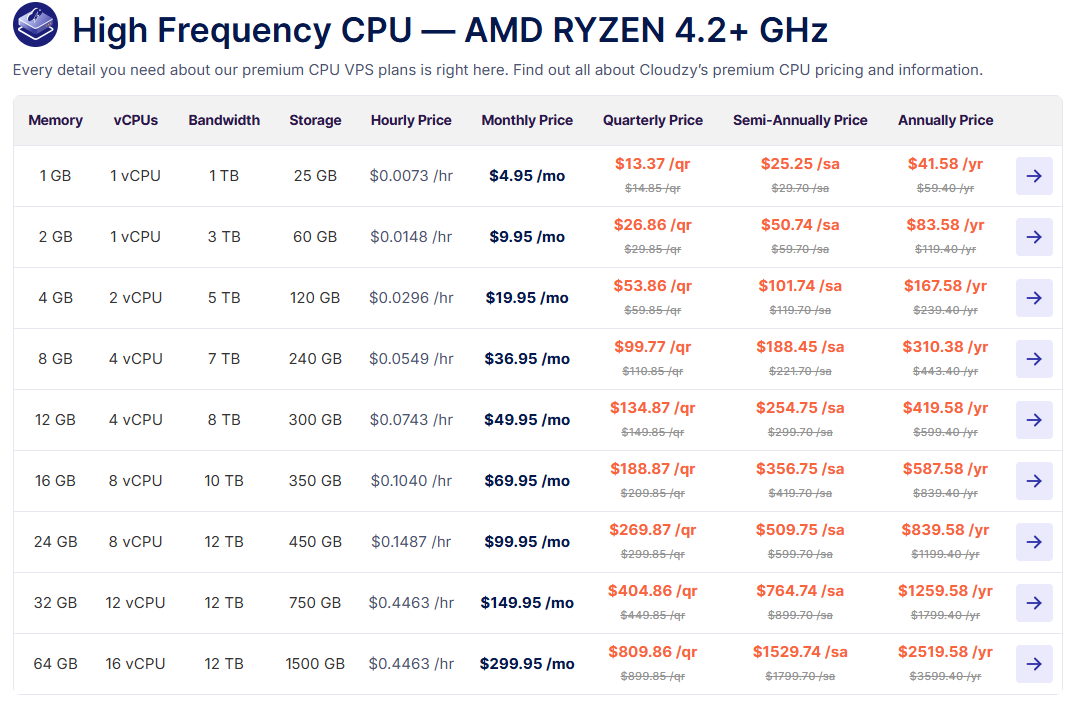
Our VPS platform delivers enterprise-grade hardware and global reach without fuss at affordable small- to medium-sized business prices.
Key Features of Cloudzy
- NVMe SSD storage paired with DDR4 RAM for consistently quick disk and memory access.
- Up to 10 Gbps network links to keep latency low and throughput high.
- 99.95 % uptime guarantee backed by redundant infrastructure.
- Flexible billing via credit card, PayPal, cryptocurrencies, and Alipay.
- Data centers in 10+ strategic locations (US, Europe, Asia) for regional performance.
Cons of Cloudzy
- A handful of users mention slight delays during account verification on Fridays.
- Occasional learning curve for users new to KVM-based VPS resizing.
DigitalOcean
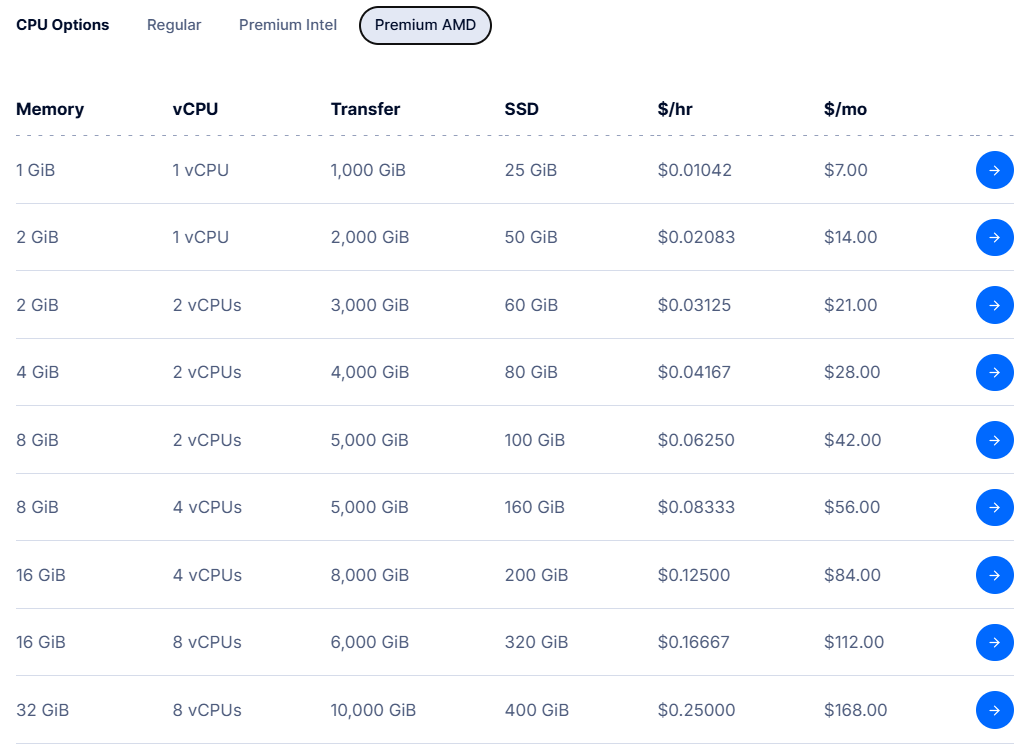
A favorite among developers for its simplicity and rich API ecosystem.
Key Features of DigitalOcean
- 15 data centers in nine regions worldwide, all running on NVMe SSD.
- 99.99 % service-level commitment on Droplet uptime.
- Transparent monthly pricing and a powerful CLI/API toolchain.
Cons of DigitalOcean
- Limited managed network services (no native NAT gateway, SQS-style queues).
- Users report “noisy neighbor” CPU spikes on shared nodes, with support often opaque about root causes.
- Some find prices less competitive compared to Hetzner or Linode for similar specs.
Vultr
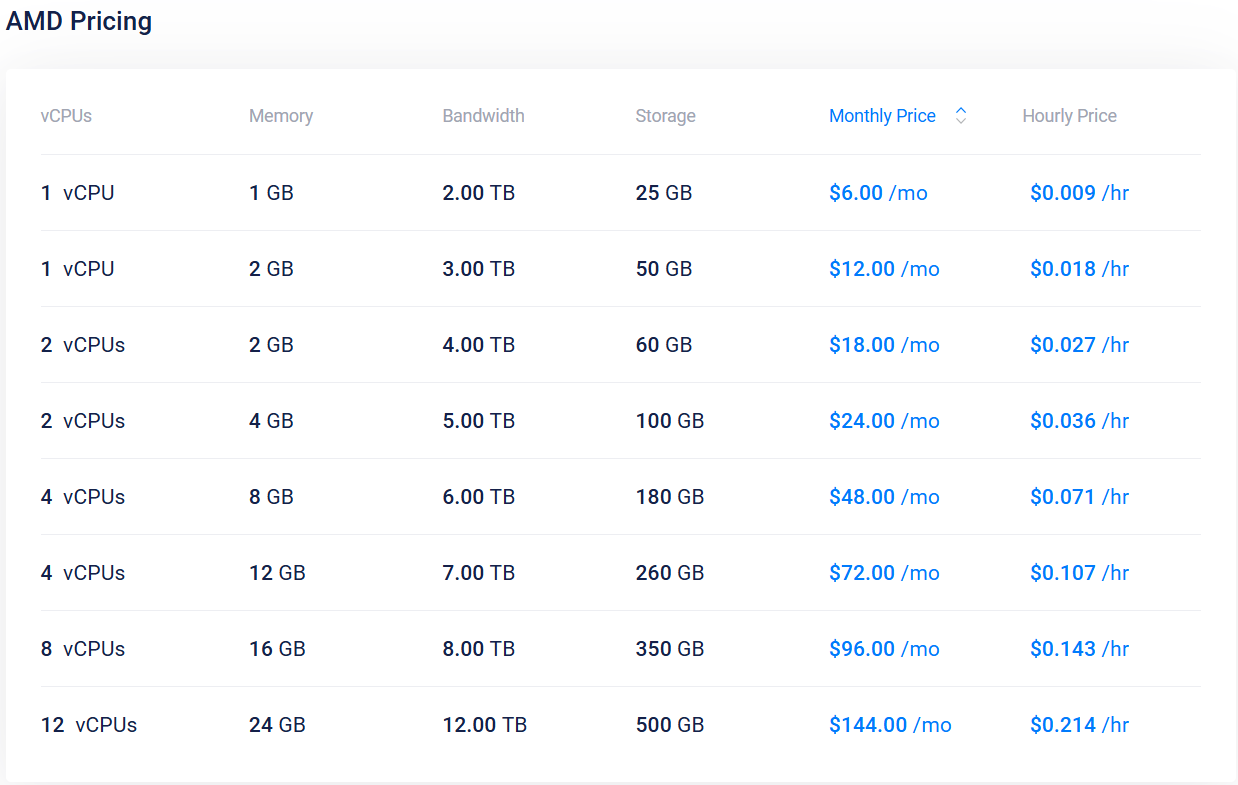
Known for the broadest regional footprint and straightforward scaling.
Key Features of Vultr
- 32 global regions spanning North America, Europe, Asia, and more
- NVMe SSD drives with private BGP and high-speed networking options.
- Hourly billing and a simple control panel for rapid deployments.
Cons of Vultr
- Users have tracked intermittent internal network glitches leading to slow site responses.
- Occasional RDP connection failures on Windows VPS require manual retries.
- A recent terms-of-service update raised eyebrows by claiming broad rights over hosted content.
Linode
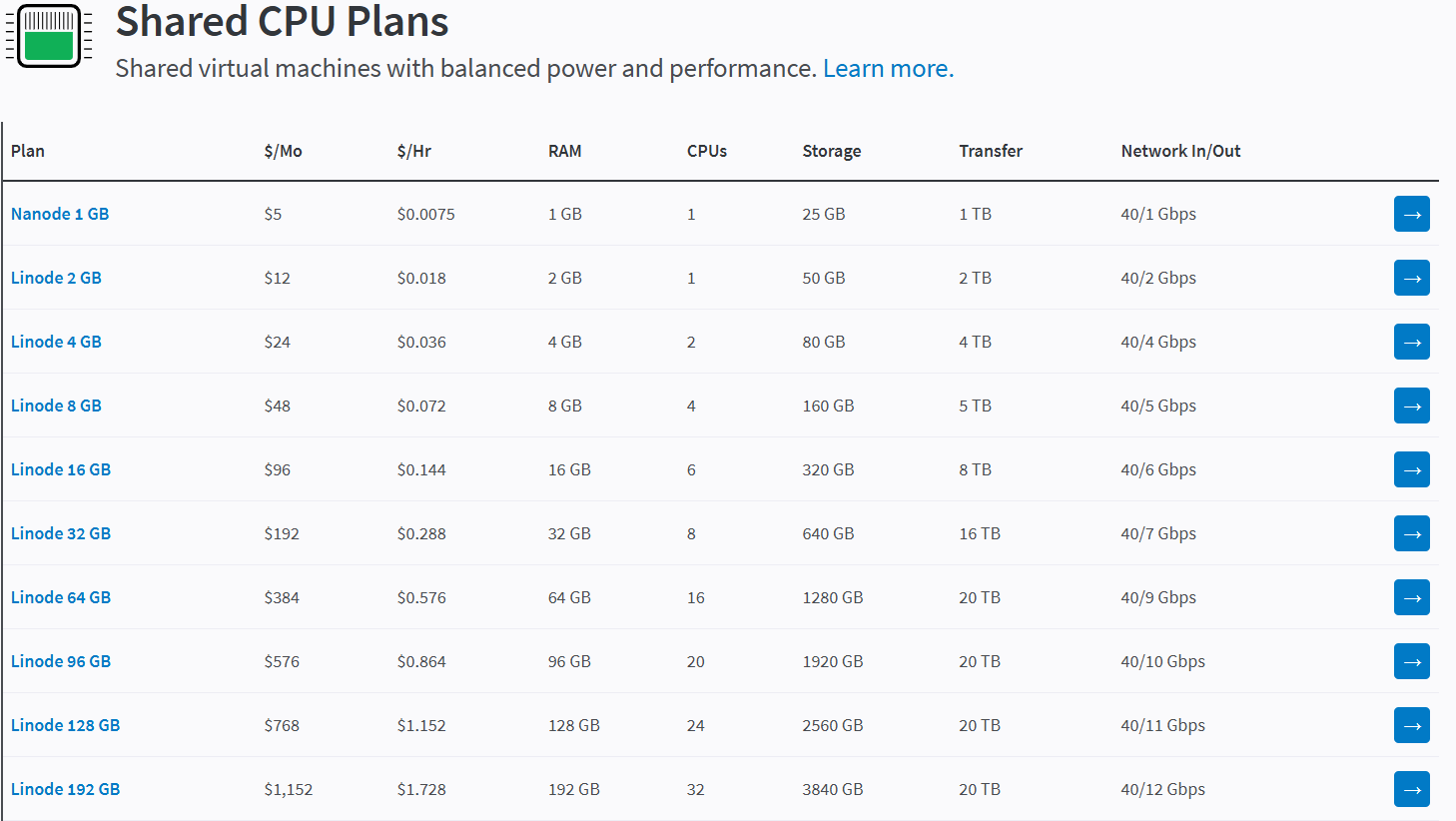
A solid all-rounder with strong networking and developer tools.
Key Features of Linode
- 10 + “core” regions plus distributed edge locations for low-latency delivery.
- Dedicated CPU plans, VLANs, and private networking across regions.
- A straightforward snapshot and backup system are available via the Linode Manager.
Cons of Linode
- Reports of emergency maintenance actions taken without advance notice, leaving apps offline.
- Some users say support can be slow to respond, especially on login-related issues.
- Disk-encryption features show up in the GUI but remain unsupported in many regions.
Hetzner

High performance and great pricing in Europe, but a more rigid support model.
Key Features of Hetzner
- Multiple data-center parks are owned in Germany and Finland, plus there are US and Singapore colocations.
- Competitive NVMe SSD storage and powerful CPUs with dark-fiber backbones.
- Strong price/performance ratio for bare-metal and cloud VPS plans.
Cons of Hetzner
- Users report super slow support ticket responses and a strict verification process.
- Higher disk-failure rate on some NVMe drives, leading to occasional RAID rebuilds.
- Account deactivations for ID verification issues sometimes leave services inaccessible.
Each option has its niche: developer-centric tools, vast regional coverage, or budget-friendly European hosting. For many use cases, especially if you want strong hardware, broad payment flexibility, and near-worldwide reach without extra complexity, Cloudzy often lands as the top pick.
 A VPS with no limitation
A VPS with no limitation
Get a Python VPS to easily reach its full potential and a high-performance, low latency server that you can use to develop, test, and, most significantly, deploy Python web apps.
Go for Python VPSFinal Thoughts
A VPS provider is your gateway to dedicated-like hosting without the full cost. By using virtualization, they offer “virtual dedicated servers” (VDS) that feel like your own machine. This provides you with private resources, full control, and the ability to run virtually any software, offering significantly better performance than shared hosting. Providers like Cloudzy enhance this by combining cutting-edge hardware (NVMe SSDs, 10 Gbps speeds) with a rich feature set, including multiple OS choices, global data centers, 24/7 support, and diverse payment options.

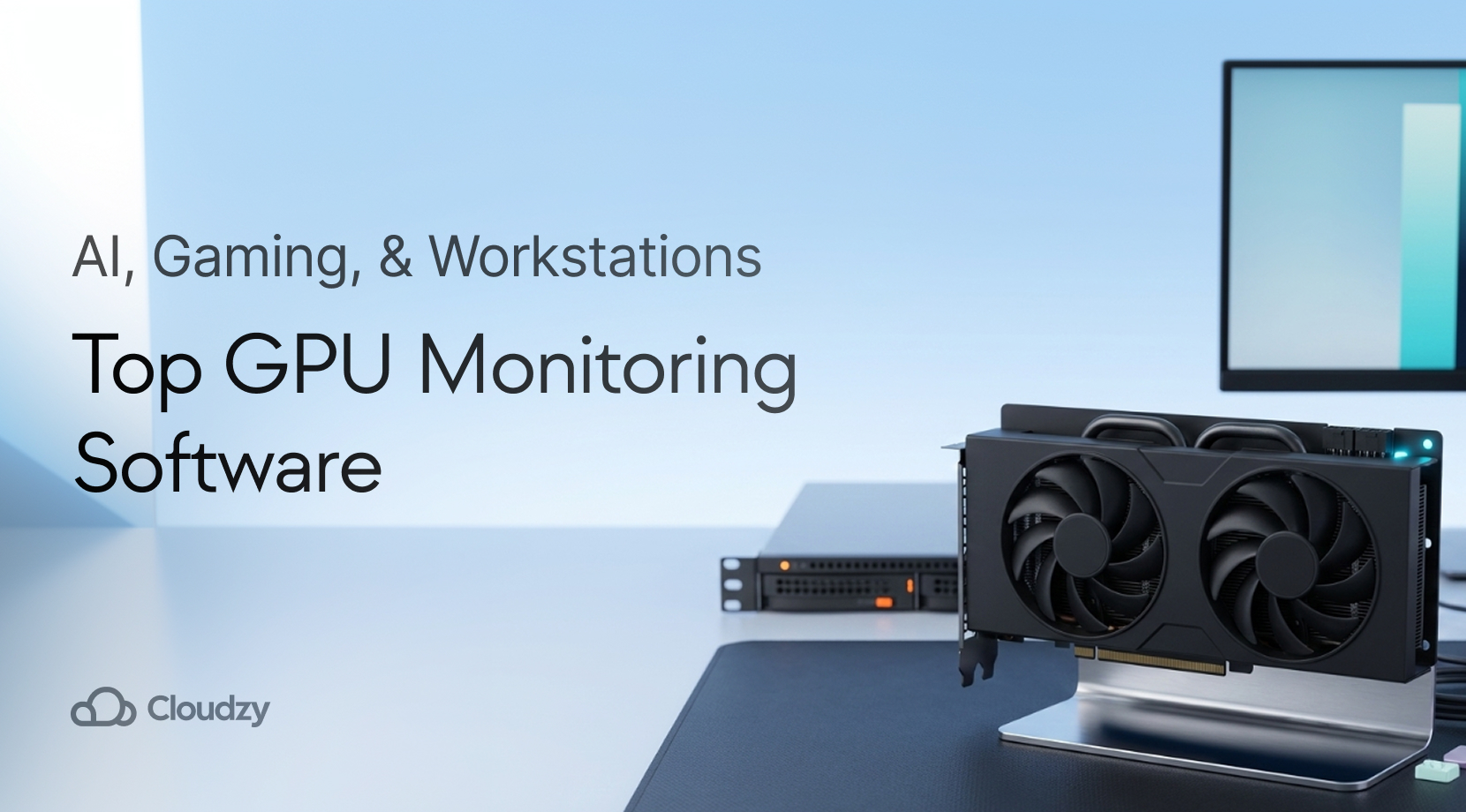


2 thoughts on “What Is a VPS Provider? A Virtual Private Server Guide”
If some one wishes to be updated with latest technologies afterward he must be pay
a visit this website and be up to date daily.
The detailed analysis in this post is impressive. It’s clear you’ve spent a lot of time researching and verifying facts, which adds credibility.